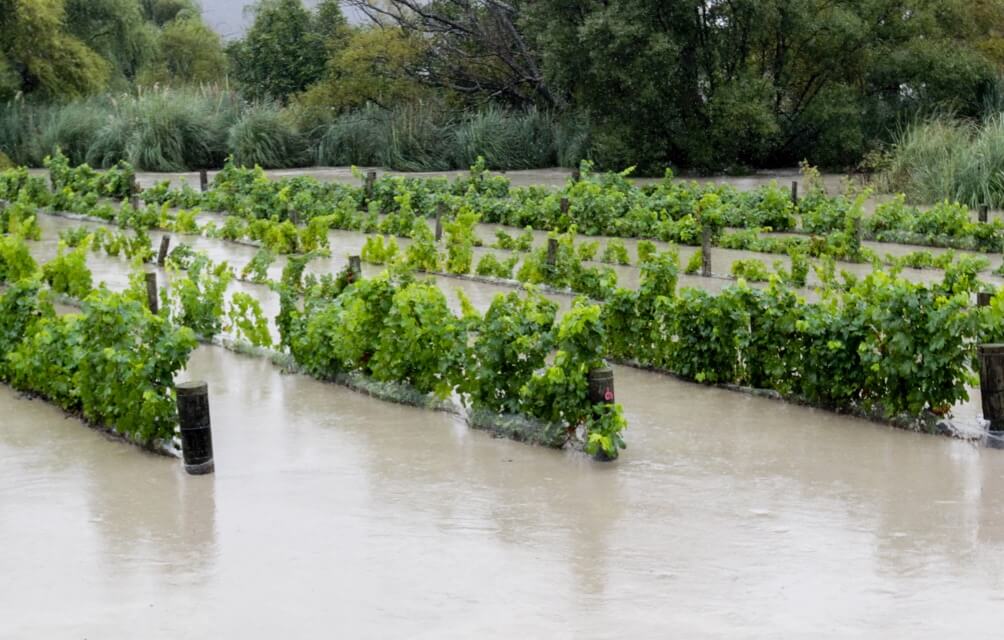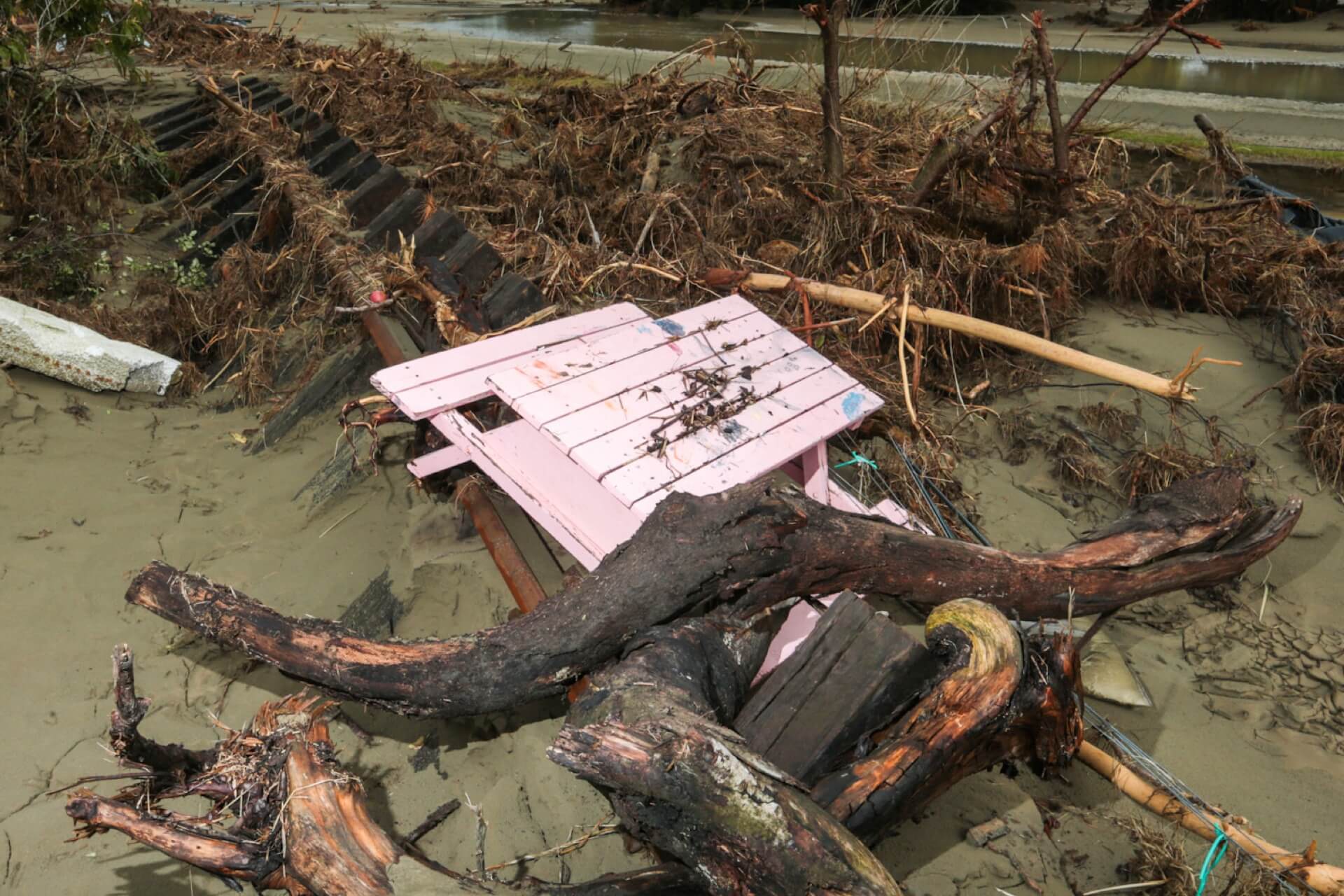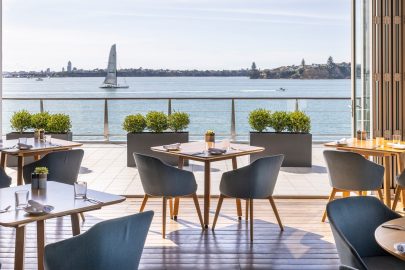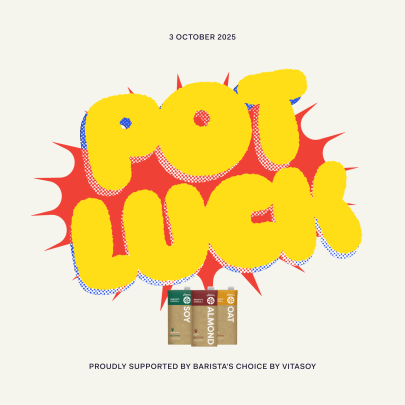Sep 11, 2023 Drinks
By the sixth day, the dead sheep were starting to stink.
Jack Jensen, the Havelock North-based extreme sportsman and CEO of media company MSFT (pronounced ‘misfit’) Productions, says there were 6000 lambs in the fields around Pakowhai when, at the height of Cyclone Gabrielle, the Ngaruroro and Tūtaekurī rivers broke through the stopbanks and surged across the fields, over State Highway 2, through the settlement and out towards the sea. The sheep were swept away, their carcasses strewn through the hedgerows. “There had been a couple of sunny days,” says Jensen. “They were rotting. They were falling apart. It was starting to get gnarly.”
After checking his mates (“Cam Z; Milly; D-Man; Charlie …”) had got safely out of their flooded properties, he followed his nose in his four-wheel-drive. “I found these fellas parked up with a digger and truck — Abe and Andy were their names — carting out dead sheep from hedges,” says Jensen, who got stuck in. “We must have removed thousands of sheep. I thought: at least this is a job someone else doesn’t have to do. I did that for six days and moved on to Puketapu.”
By this stage, Jensen and partner Micki Michau had set up a ‘Hawke’s Bay Helping’ page on the MSFT website. At its peak, the page had 150,000 visitors daily, becoming one of the major resources for coordinating offers of help in the immediate aftermath of the floods in the region (it has since been wound up). Jensen, who credits Michau with the concept and much of the work of setting up and running it, says it was “basically like a Trade Me listings page”. People who needed help were connected up with people offering to help — a service that, almost stunning in its simplicity, was vital in the aftermath of the cyclone. “We were flooded with messages from so many amazing people,” Jensen says. “People would get in touch and say, ‘We’ve got three 40-ton diggers on the West Coast and 10 people, how can we help?’ I’d do 10-hour days clearing up, then get home and spend three or four hours clearing messages.”
Jensen and Michau’s observation that people needed a way to connect is representative of a wider issue experienced at the time. The floods created an information black hole, of both communications and data. “[The Hawke’s Bay regional] council was flying blind,” says Xan Harding, grapegrower and regional councillor, talking of the weather telemetry stations and communications that were lost.
Before the monitors were rendered inoperable by the floodwaters, they recorded jaw-dropping figures (though there is also some question over their accuracy). In the upper reaches of the Esk River, north of Napier, the flow rose from 2500 litres per second to 111,000 litres just before midnight on Monday, 13 February. Downstream in Eskdale, one of the hardest-hit areas, regional council data shows the flow had gone from 10,000 litres per second on Monday morning to 1.7 million litres at 3am on Tuesday, just before the monitoring appears to cut out. Similar figures were registered at the Mangaone River at Rissington further inland (the bridge there, as with the one over the Tūtaekurī at Puketapu, was swept away, cutting off large numbers of rural properties for weeks). The Tūtaekurī monitoring site at Puketapu cut out at 3am, reading 1.8 million litres a second. The Ngaruroro at Fernhill, 9km northwest of Hastings city centre, peaked at 9am on Tuesday at just over five million litres per second (from a baseline the week before of around 30,000 litres a second). Two Olympic swimming pools of water every second.
That Monday night in Eskdale, Philip Barber and his wife, Sarah Johnson, had spent three hours trying to mop the water in their flooded basement, with their washing machine and dryer working overtime. They gave up well before midnight. The couple had made an effort to prepare, putting out strategic sandbags as Cyclone Gabrielle approached. They knew the creek that ran past their property, between their house and the five hectares of Petane Wines vineyard Barber had dedicated 16 years to, was capricious in inclement weather.
Barber had checked the river-level data on Monday afternoon at 4pm. It indicated the Esk River, which runs west to east 300m north of their house, was only one metre from spilling over the stopbank. The same threat would play out that night in numerous locations across Hawke’s Bay. In all, between 5 and 6km of stopbank would be breached in 30 places.
Significant breaches occurred across the region. In Central Hawke’s Bay, near Waipawa town, one breach would rediscover the old course of the Waipawa River (it was diverted by floods in 1868), just above its modern-day confluence with the Tukituki, creating a new waterway several kilometres long and flooding and sweeping away large amounts of farm soil. On the Ngaruroro River around Omahu and Fernhill, multiple breaches occurred on both banks of the river. The Omahu side on the northern bank took the most damage, with floodwaters so high that vineyards were completely submerged, the vines invisible to those who, evacuated to high ground, watched in awe. In the same area, just north of Hastings and west of Napier, the Tūtaekurī River also breached the stopbanks in multiple locations upstream and downstream of Puketapu, close to the Napier suburb of Taradale and further downstream, towards its confluence with the Ngaruroro just past Pakowhai.
“We lost power,” says Barber, who remembers the water coming up the basement staircase at a rate of one step every half-hour. “Things got weird when the shower started to fill with water.”
It was the middle of the night, the clock ticking over into the early hours of Tuesday, when Barber looked out of his window to see “a river” coursing down his driveway. The carpet at the ground-floor level had started lifting up, floating. Waking their two children (Jamie, six, and Alice, three) at around 1am, the couple stacked a table and bench on their deck. Sarah climbed on to the roof first and Philip passed the children up to her before clambering up himself. In a story that was told and retold in media outlets in the weeks after the cyclone, they would spend the next three hours there. Barber was convinced his brother, Christopher, and his family were dead. Christopher’s house was a few hundred metres further up the valley, but slightly lower, neighbouring their relatively new Cone & Flower eatery business and Christopher’s Zeelandt Brewery, which also doubled as storage for Petane Wines, the vineyards of which lay between the two. “We watched cars float past. It was a bit like those images of the tsunami in Japan,” Barber says.
The unthinkable — thoughts of death — began to loom. “It was there, in the back of mind,” he says. “We were all terrified, but we never really freaked out. Sarah had a little moment and the kids helped to calm her down. They were amazing. They were so calm.”

In overall terms, the wine industry got off lightly. Approximately 8000 hectares of orchards — predominantly apples and pears — flooded on the Heretaunga Plains. Of that, 2000 hectares, according to Harding, were lost completely. Of 4800 hectares of vineyard in wider Hawke’s Bay, however, 300 hectares were impacted by floods and, of that, only — ‘only’ — 140 hectares have been lost. Less talked-about but with potentially wide-reaching impact for the local wine industry is the flood damage to the Taradale campus of EIT/Te Pūkenga, which houses the polytech’s wine school. Alumni include Philip Barber and this writer.
Although buildings on the campus suffered 90% silt and water damage and its future status is undecided, much of the rest of Taradale was spared, in a stroke of incredible good fortune. The Tūtaekurī stopbanks by the town had been given a $19 million upgrade financed by the government-led Covid-19 recovery fund, improving their flood protection from one-in-100-year to one-in-500-year level. The upgrade had been completed one month before the floods.
“That’s what saved Taradale,” says Harding.
Essentially, the damage was patchy. In some places it is in the order of complete devastation. Tangoio, a small settlement set in a beautiful valley a short drive north of Napier, beyond Esk, suffered a similar fate to Eskdale. Puketapu, Omarunui Rd, Swamp Rd, Moteo, Omahu, Waiohiki, Pakowhai and Meeanee — all suffered appalling devastation.
Many winegrowers, though — apart from contending with excessive rainfall during a growing season that was already uncharacteristically damp — were lucky. Brent Linn, the executive officer of Hawke’s Bay Wine, is trying to tell both stories. “The narrative has to focus on both parts,” he says. “I’m still getting comments, domestically and offshore, asking if we’re still making wine. There’s some bloody fine wine coming off the Gimblett Gravels, for example — it’s only fair that that gets a little bit of attention.”
Linn concedes it was a “highly localised but highly traumatic event”. Indeed, while flooded areas can be mapped out and damages estimated in dollars, the human cost is the hardest to bear. Barber admits that while, personally, the devastation was easier to come to terms with because he’d seen the flooding occur before his very eyes, he was in a “very dark place” in the days immediately afterwards.
Assessing the community trauma months on from the cyclone, Jensen says this is just the start. (The mental health sphere is one Jensen is familiar with — he founded Spark That Chat, a campaign to raise awareness and help those struggling with mental health issues, after the suicide of a close friend.) “There have been three to four suicides since the cyclone and these issues are going to continue to grow,” he says. “Farmers are still cut off; people are still in the mud today; people have been told they can’t go back to their homes; they’ve been living this hell — it’s super-gnarly.”
Added to this, the impact on lives is exacerbated by the localised nature of the destruction and by the fact that other, reasonably unaffected areas in Hawke’s Bay have returned to everyday existence. “Compare the sense of normalcy in the region to places like Esk Valley or Omarunui Rd,” said Linn, when we talked in May. “Most people are thinking their lives have returned to normal whereas those impacted are probably at the lowest ebb of the cycle. They’ve had all the offers of help, they’ve possibly spent what little money they have, they’re waiting to return to their homes. They may have to contend with a change of land use, and what’s their new identity? You know, ‘I was a winemaker.’ What happens now?”
At a regional, if not industry, level, the mental health aspect of the tragedy is certainly not being overlooked. Harding says that Hawke’s Bay Wine and numerous organisations across the region are providing members with access to psychologists and support. He also singles out the work of the Red Cross.
And in some cases, trauma is partially offset by the memory of human responses in the aftermath. The outpouring of goodwill immediately after the cyclone showed just how much of a community there was in the region. “People just reached out,” Linn told me. “In the old days, you’d have kept a phone tree and would have rung around … If there is a learning here, it is the ability to stand up a good, local network [of people in the industry].”
The community help is something Barber cherishes, calling it “overwhelming”. And the goodwill extends beyond Hawke’s Bay. The response on the Petane Wines website alone, he says, has seen him sell online about a quarter of his stock — product that was rescued from the flooded and silt-sodden Zeelandt Brewery by a group of volunteers from across the region and from all walks of life. (One of these helpers was the headteacher of Hukarere Girls’ College, located just upstream from Zeelandt, which bore the brunt of the floodwaters.) The volunteer digger crew that dug out Philip Barber and Sarah Johnson’s driveway — the one that had been a “river” five days before — was passed on, through a succession of contacts, by winemaker friends on the other side of Hawke’s Bay.
At the time of going to press, MSFT was on the verge of announcing a series of events in the region for the community to come back together. Going forward, part of the regional plan is to put more support into standing up and maintaining community networks. “Community resilience” is the phrase Harding uses.
The physical response is ongoing, being led at a regional level with national support. Drains need to be cleared of silt (in some cases more than once) and maintained or repaired. Many of the breached stopbanks have now been repaired, but 6km of weakened stopbanks still need to be shored up. “It’s a marathon, not a sprint,” says Harding, falling back on cliché.
“You can never build protection for every eventuality,” he goes on. “You have to think about fallbacks and having a plan B. You can’t rely completely on one piece of infrastructure — we need to consider spillways as well as stopbanks, for instance. We also need back-up communications. We have to expect more and more of these climate events.”
Talking to me later, Harding mentions that wood debris had added to the failure of old bridges with short spans, and that wider-span bridges would likely be seen in the future. (This debris was not necessarily slash from logging — according to regional council findings, it was mostly wood from riparian plantings along the Ngaruroro, Tūtaekurī and Tukituki — in some cases planted after Cyclone Bola to shore up hillsides.)
The estimated cost of the rebuild is set at $1.5 billion, Harding tells me, but the money “is never going to be enough”. He adds, “Some businesses have losses so great that, unless they get some support, they’ll be wound up.” And with new zoning plans out and the government beginning discussions with those affected, the future remains uncertain for many.
For his part, Philip Barber will not replant. Losing 16 years of work — the vineyard he planted and tended — was one the most heartbreaking aspects of the floods for him. He’ll try to pull up the vineyard posts and the wires but he won’t replant grapes. The family’s insurers paid out on his house, and he and Sarah have bought a property in the hills. He currently works part-time in the vineyards at Linden Estate Winery, just down the road, itself also hugely impacted by the flooding.
And he’s also spending more time with his family. “They say this was a one-in-100-year event; what if it’s a one in 20?” Barber says. “Lots of people told me they had worked so hard, they missed their kids growing up — I don’t want that. I’m going to enjoy it. We’re taking some holidays, getting away. There’s more to life than growing grapes.”
–






